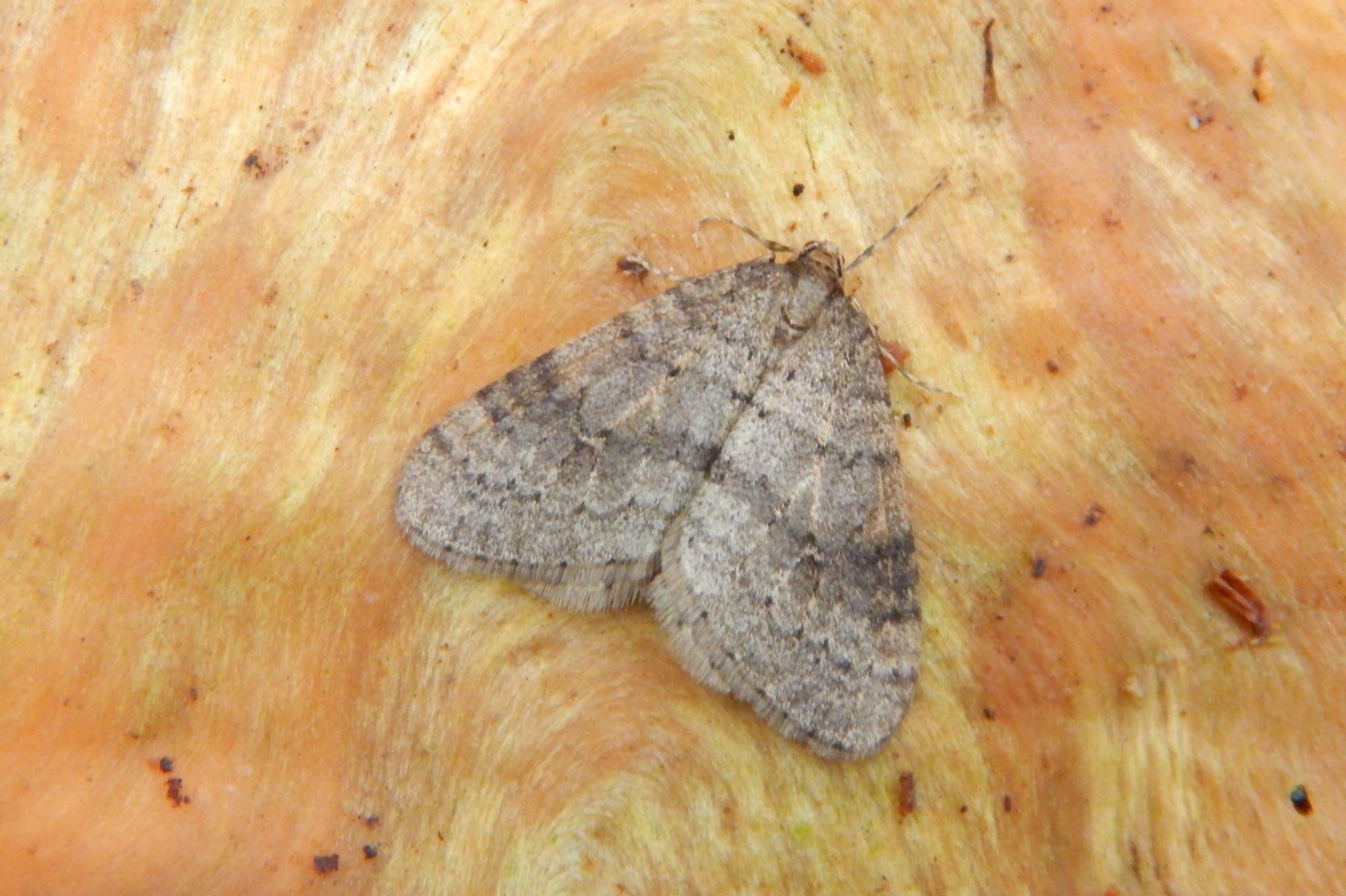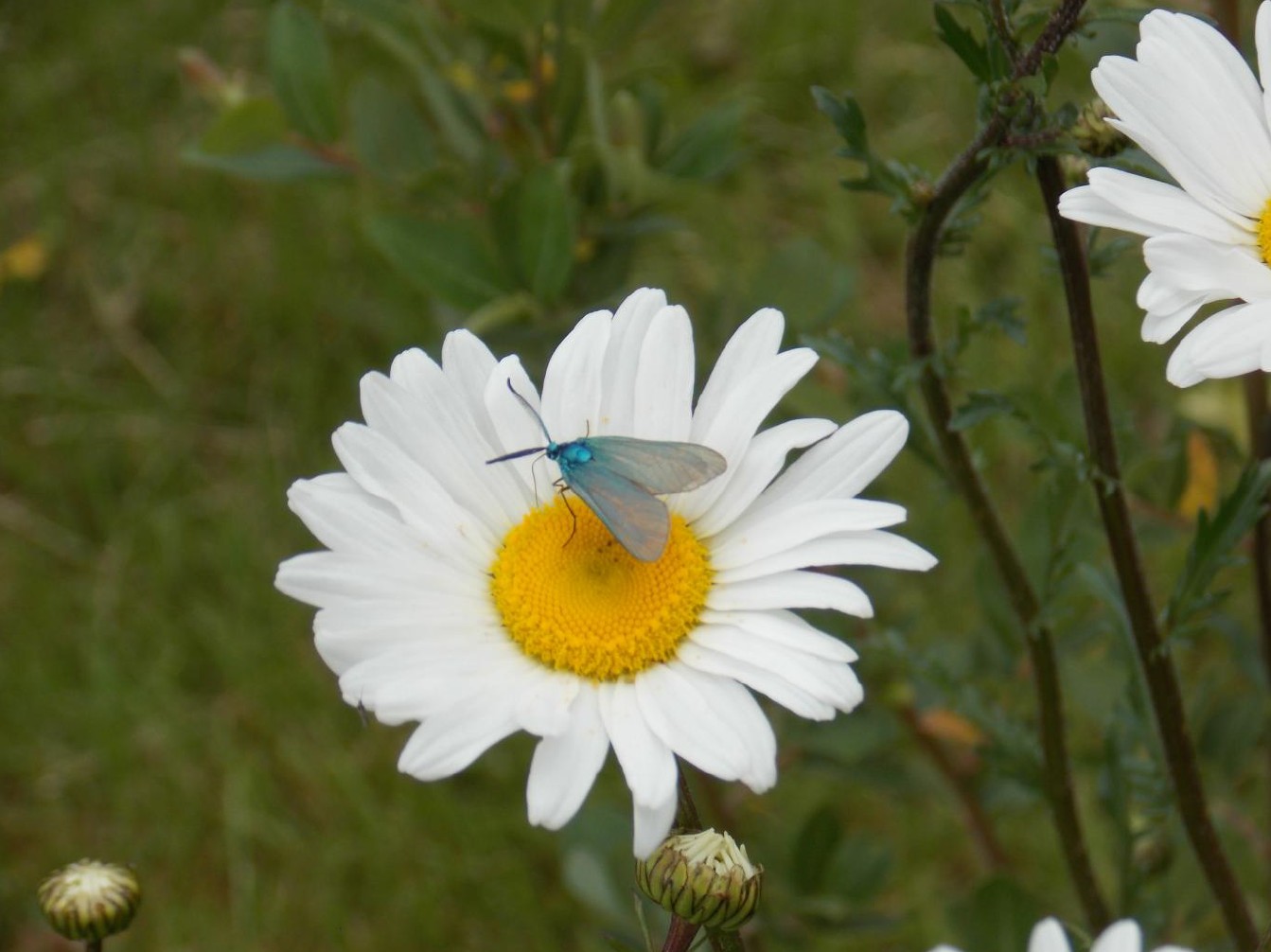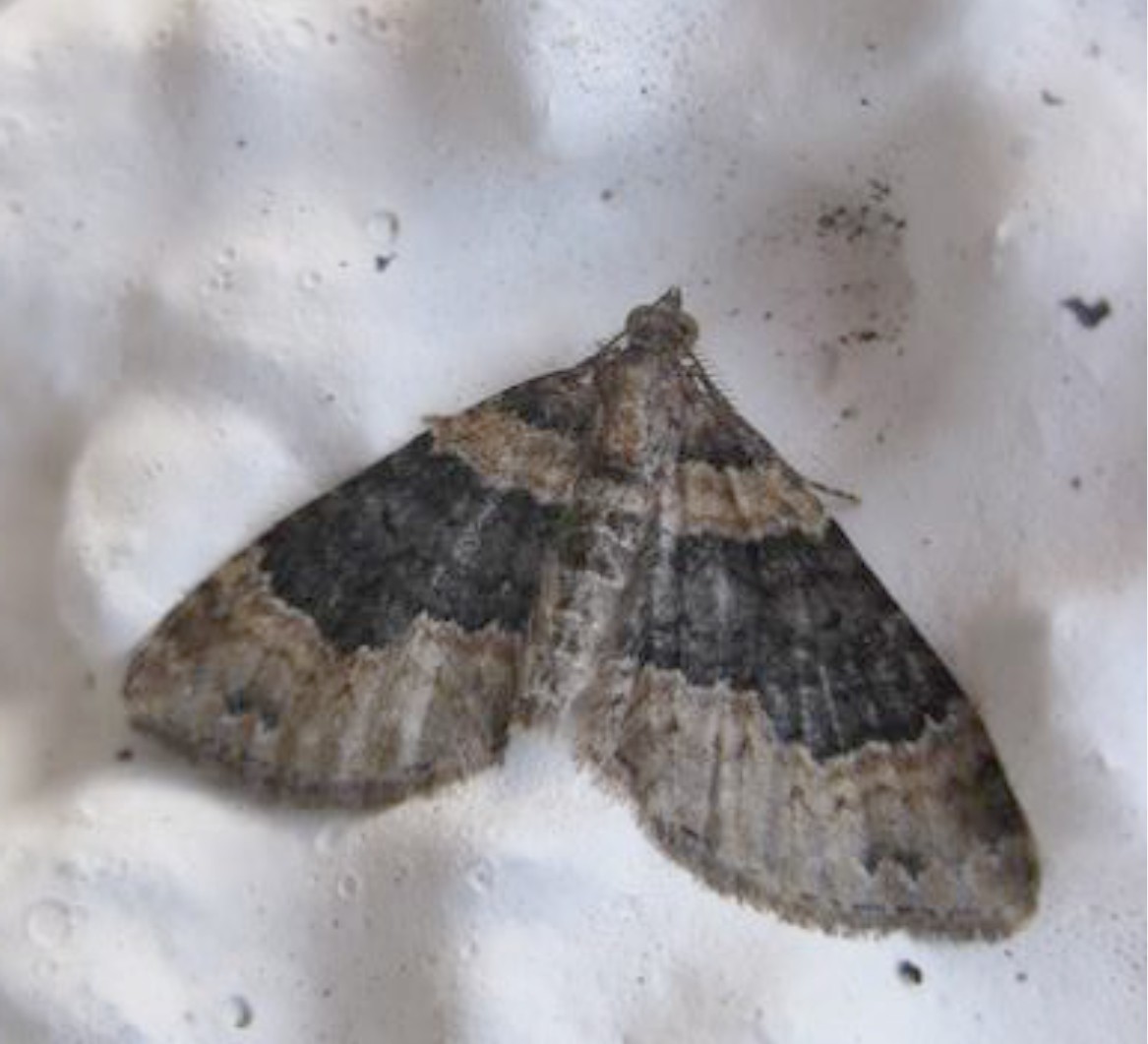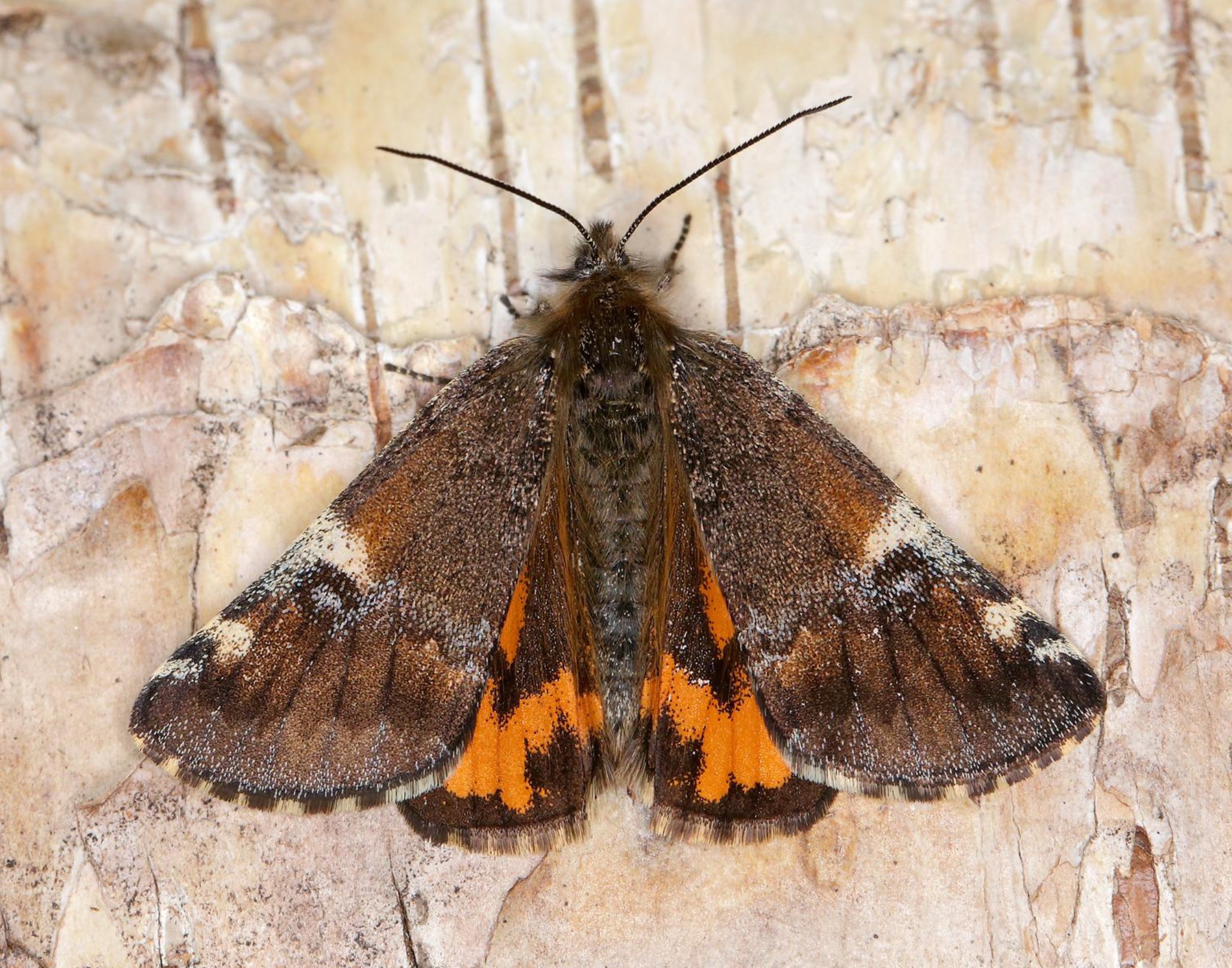The choice of Moth of the Week is reducing rapidly but the Winter Moth is an obvious candidate. This small and apparently delicate moth is in fact tough as old boots and can be seen fluttering in the car headlights and resting on house windows even on a freezing winter night. This is achievable by being endothermic and chemically generating enough heat within their bodies to allow flight. This mainly applies to the male as the female has only rudimentary wings and only walks about. Her job once, she has hatched out of a pupa underground, is to climb up the nearby tree trunk (or equivalent structure) and attract males. The males, when not in the air, spend most of the night with their wings held over their backs and mate in this position.
The fertilised females climb higher into the tree to lay over 100 eggs in bark crevices or on twigs. These eggs over-winter and hatch out in early spring when the temperature rises. The tiny green, looper caterpillars feed on the swelling tree buds and then the leaves as they start to grow. They are fully grown in six weeks (or less depending on the temperature) and descend on silk threads to the ground to pupate in the soil for the next six months.
The astonishing feature of the Winter Moth is just how successful a species it is, occurring in vast numbers in some habitats, in some years. Maximum populations have been calculated at 25 million individuals per hectare and at this density they can defoliate over 90% of entire woods, severely reducing the tree’s yearly growth by up to 40%. I have stood in the woods near Aberlady in East Lothian on a still day just as the young leaves were reaching full size and you could clearly hear the pattering of tens of thousands of caterpillar droppings falling from the trees! Usually, along with other similar species such as the Mottled Umber, this vast, but short lived, biomass is available as food to the early nesting woodland birds such as the Great Tits and Blue Tits.
This remarkable species has attracted the attention of ecologists for decades as they measured the fluctuations in the numbers of moths in successive years and the effect this had on the fate of woodland bird chicks that were dependant on the caterpillars for food. For example, very early spring temperatures caused the moths to hatch out earlier than usual. This meant that the birds, which are triggered to lay by day length, were hatching their chicks too late to feed them on the caterpillars before they pupated. Therefore, the young birds did not do well. However, too soon a hatch could mean that the tree buds were not ready to grow and the caterpillars themselves could starve. Huge populations, defoliating the trees, can also result in starving caterpillars and reducing the fecundity of the next year’s adult moths. There are also a range of parasitic insects involved in affecting the size of the moth’s populations. Research on the complex population dynamics centred around the Winter Moth has produced some of the basic theories of ecology. Many of these have been used to plan the practical control of these moths, especially in countries where the Winter Moth is an introduced pest.
In D&G this species is common and widespread with well over 550 records and it is a similar picture throughout the UK. Here moths have been recorded as early as October but the population reaches its peak in late November and December. Much smaller numbers of moths can be seen through January into March. This species lives on all kinds of trees such as oak, lime, apple, birch, hazel and hawthorn but does also feed on plants such as heather where numbers can be sufficient to cause widespread defoliation.





